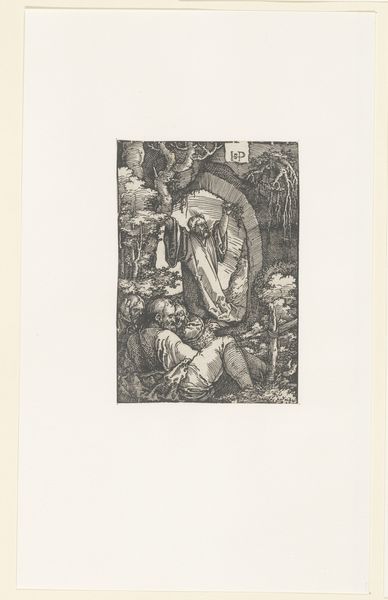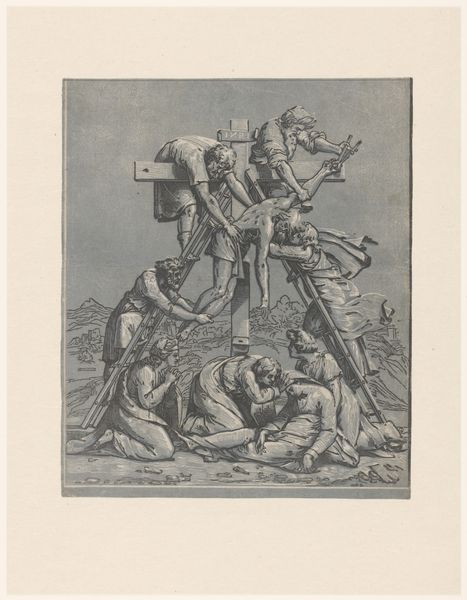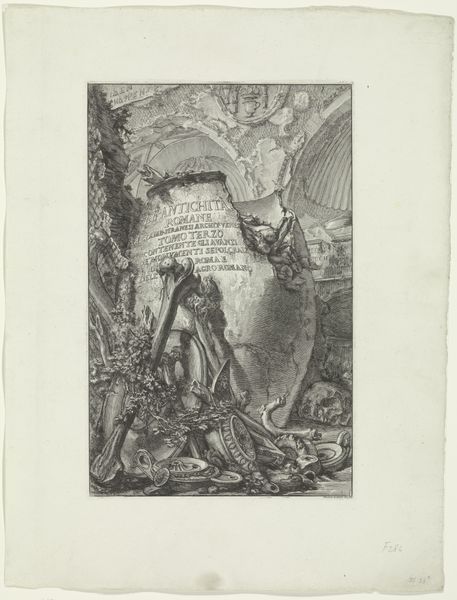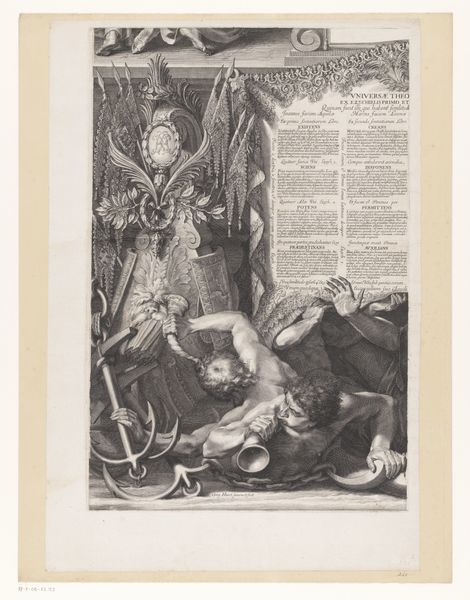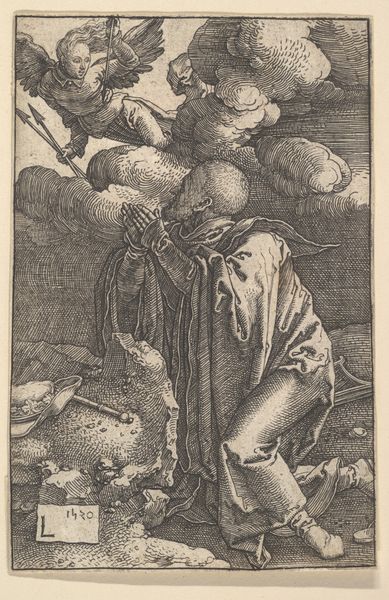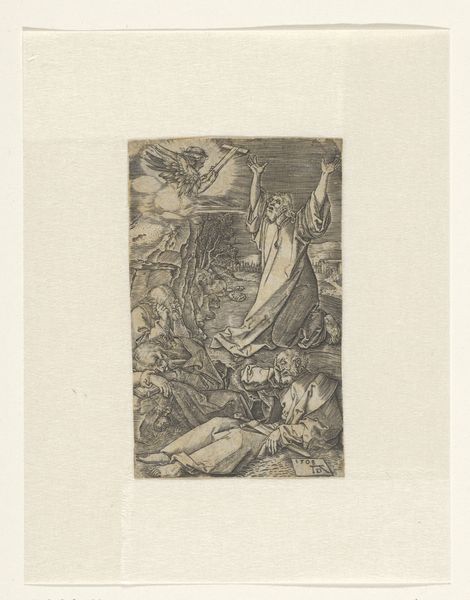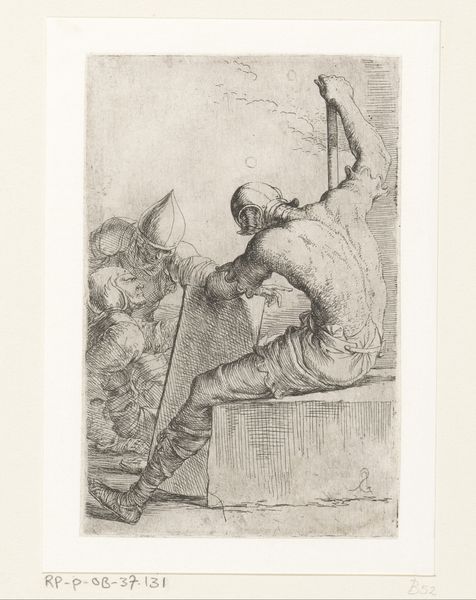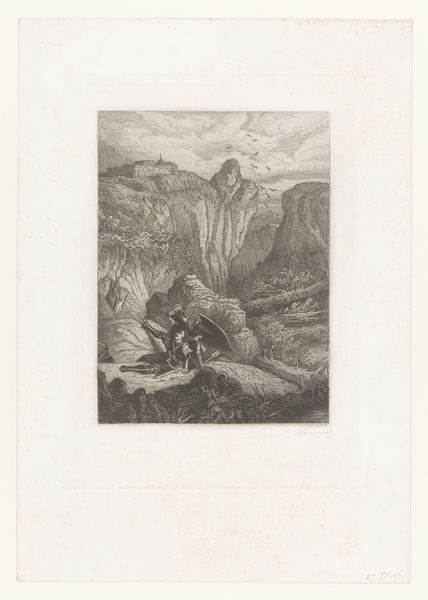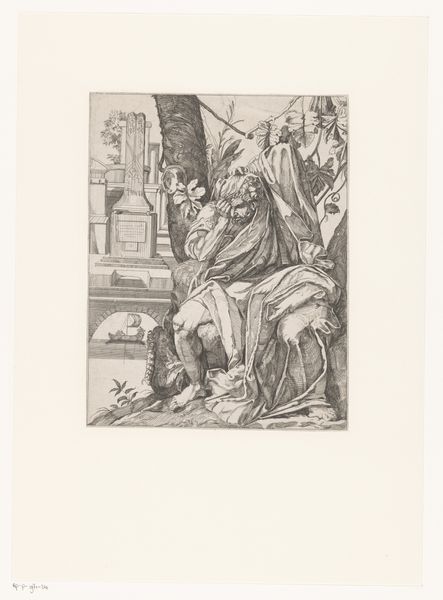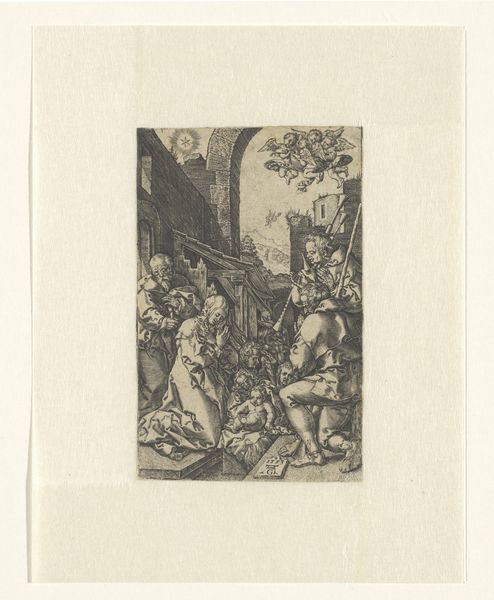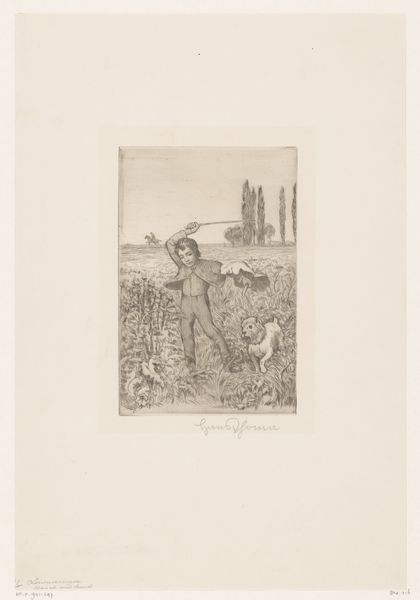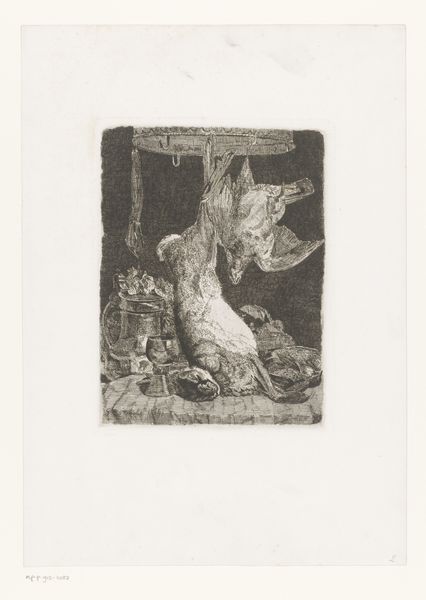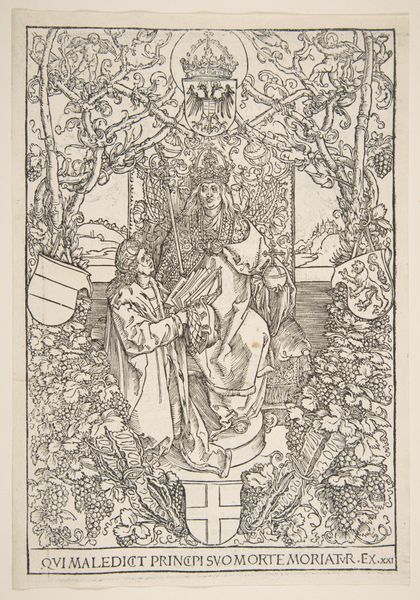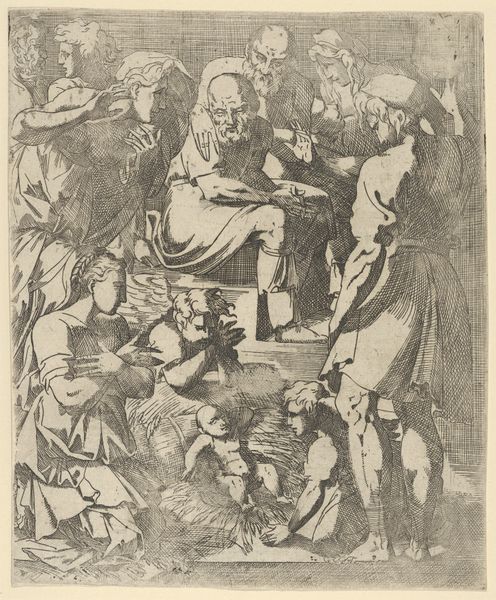
drawing, ink
#
drawing
#
pen illustration
#
figuration
#
ink
#
line
#
symbolism
#
genre-painting
Dimensions: height 342 mm, width 251 mm
Copyright: Rijks Museum: Open Domain
Curator: Willem Pothast created this work between 1887 and 1916, titled “Meisje in een bak met knollen." It’s a drawing done in pen and ink, heavily influenced by the symbolist movement with a leaning towards genre-painting themes. Editor: It has a darkly comic quality to it. Two figures drowning in, I presume, turnips? There's this strange tension between the pastoral setting—or what's left of it—and the figures themselves, weighed down. It’s claustrophobic, like being buried alive, but with root vegetables. Curator: I see your point. The use of line really emphasizes that density, doesn't it? Pothast clearly draws inspiration from a symbolic tradition, where mundane objects gain richer significance. He made several works on themes that related to work, duty, family. So how do you think those things factor into this scene of seeming suffocation? Editor: Well, on a basic level, turnips represent food, sustenance. Abundance, even. But look closer, and the expressions! It feels like these characters are being consumed, not nourished, by…something. Overwork, family expectation, or something deeper and more suffocating like the culture of labor and sacrifice. There's a strong sense of unease here; it reads almost like a bizarre cautionary fable, if fables were written by Kafka. Curator: And don't forget how this fits into broader themes that preoccupied fin-de-siècle artists. We see anxiety around industrialization, the decay of rural life, and the weight of social expectations represented visually. The piece resonates because these were anxieties embedded in broader historical contexts and artistic trends, particularly among symbolists who favored emotion and meaning. Editor: Absolutely. This is a visual poem about the soul, not agriculture. He takes a snapshot of the social and economic conditions of life and renders something both grotesque and sympathetic, really making you feel trapped. The piece invites you to reflect on our relationship with what sustains us but potentially threatens to overwhelm us. What a wonderfully weird world that Mr. Pothast drew for us to see and perhaps even drown in. Curator: Indeed, it seems there are layers of possible meaning that all point toward something sinister. I feel that in doing so Pothast captured both a personal sentiment and the socio-political mood, blending art history with…our history. Editor: Yes. Leaving us to wonder: are we any better at swimming now?
Comments
No comments
Be the first to comment and join the conversation on the ultimate creative platform.
